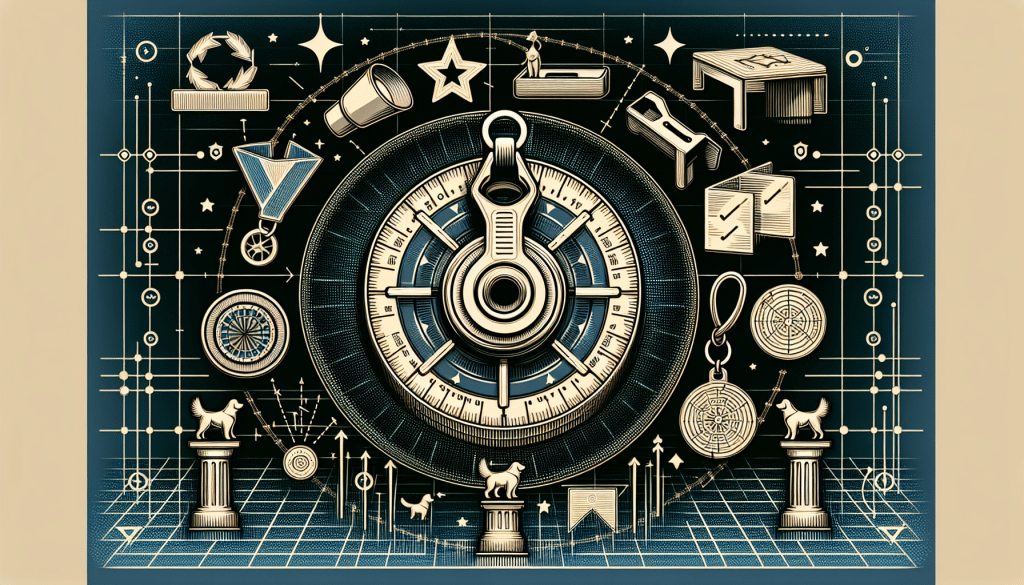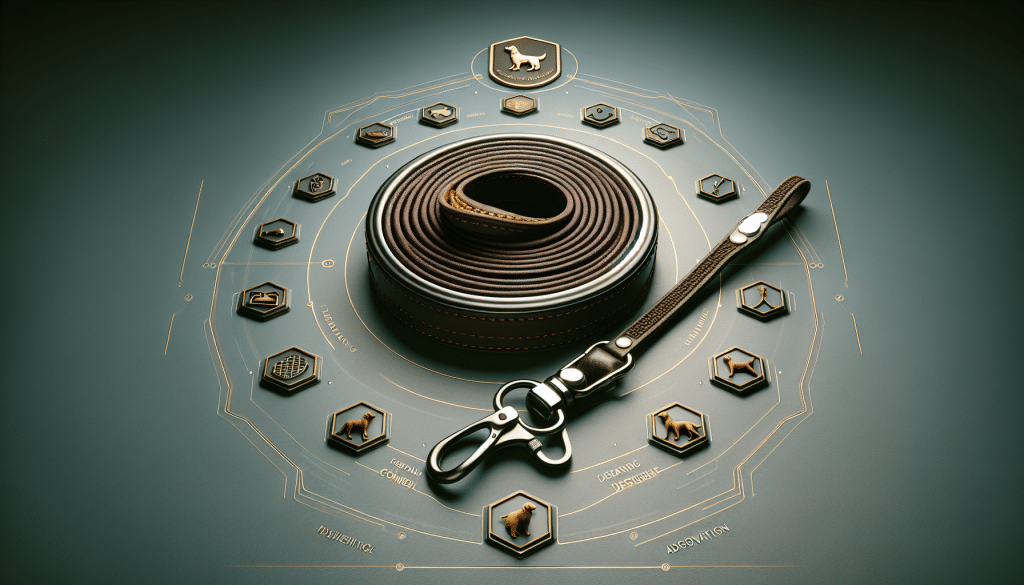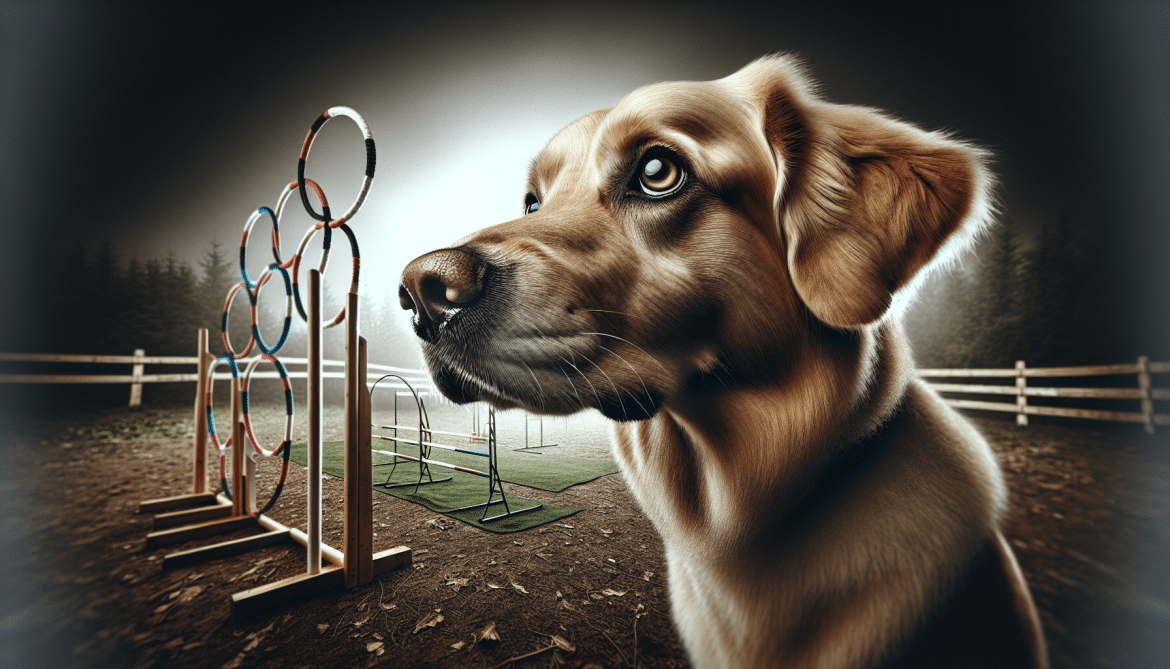If you're an experienced dog owner looking to take your training skills to the next level, then "Mastering Advanced Training Techniques for Experienced Dog Owners" is the article you've been waiting for. Packed with valuable insights and practical advice, this comprehensive guide will equip you with the knowledge and techniques necessary to elevate your dog's training to new heights. From advanced obedience commands to problem-solving strategies, this article is a must-read for anyone looking to enhance the bond with their four-legged companion. Get ready to expand your training repertoire and unleash your dog's full potential.

This image is property of images.pexels.com.
1. Understanding Your Dog's Behavior
1.1 Observing and Interpreting Body Language
To effectively train your dog, it is crucial to understand their body language. Dogs communicate primarily through body signals and facial expressions. By observing their posture, tail position, ears, and facial expressions, you can decipher their emotions and intentions. For example, a wagging tail doesn't always indicate a happy dog; it could also indicate excitement or even fear. By paying close attention to these non-verbal cues, you can better understand your dog's behavior and adjust your training approach accordingly.
1.2 Recognizing Behavioral Patterns
Every dog has distinct behavioral patterns that you need to recognize to improve their training. By identifying these patterns, you can anticipate their responses and tailor your training methods to suit their individual personalities. Some dogs may be more motivated by food rewards, while others may respond better to praise or playtime. Understanding your dog's behavior patterns will allow you to choose the most effective training techniques and ensure faster progress.
1.3 Identifying Triggers and Stressors
Identifying the triggers and stressors that affect your dog is vital in maintaining their overall well-being and preventing behavioral issues. Dogs may have specific triggers, such as loud noises, unfamiliar environments, or certain individuals, that can cause stress or anxiety. By identifying these triggers, you can apply appropriate counter-conditioning and desensitization techniques to help your dog overcome their fears and build confidence. Recognizing and managing your dog's triggers will create a calmer and more secure environment for effective training.
2. Positive Reinforcement Training Methods
2.1 Using Rewards and Treats Effectively
Positive reinforcement is a highly effective training method that relies on rewarding desired behaviors rather than punishing undesirable ones. Treats can be an excellent motivator for dogs, but it's essential to use them effectively to maximize their effectiveness. Use small, tasty treats that your dog finds rewarding and reserve them exclusively for training sessions. Gradually, you can reduce the frequency of treats and transition to verbal praise and physical affection as rewards. By using rewards strategically, you can reinforce positive behaviors and encourage your dog's enthusiasm for training.
2.2 Clicker Training for Precision and Timing
Clicker training is a powerful technique that utilizes a small handheld device that makes a distinct clicking sound. The clicker acts as a bridge to mark the desired behavior at the precise moment when it occurs, making it easier for your dog to understand what they're being rewarded for. Consistency and timing are crucial in clicker training, as the click must follow the desired behavior immediately. This technique enhances communication and enables precise training, allowing you to shape complex behaviors more effectively.
2.3 Shaping Behaviors through Luring and Targeting
Shaping behaviors involves breaking complex actions into smaller steps and reinforcing incremental progress. Luring and targeting are techniques commonly used to shape behaviors. Luring involves using a treat or a target stick to guide your dog into performing the desired action, gradually reducing the need for the prompt over time. Targeting, on the other hand, involves teaching your dog to touch a specific object, such as your hand or a target stick, with their nose or paw. By shaping behaviors through luring and targeting, you can teach your dog intricate tricks or commands with patience and precision.

This image is property of images.pexels.com.
3. Advanced Obedience Training
3.1 Perfecting Basic Commands
Building upon a solid foundation of basic commands is essential for advancing your dog's obedience training. Before moving on to complex commands, ensure that your dog has mastered fundamental cues such as sit, stay, come, and heel. Practice these commands in various environments, gradually increasing distractions to reinforce reliability. Advanced obedience training relies on the consistency and responsiveness established through perfecting basic commands.
3.2 Introducing Complex Commands
Once your dog has a strong grasp of basic obedience, you can introduce more complex commands to challenge their cognitive abilities. Advanced commands such as "leave it," "wait," or "go to your mat" require higher levels of impulse control and focus. Break down these commands into manageable steps, rewarding your dog for each progression. With patience and consistent training, your dog will be able to execute more intricate commands reliably.
3.3 Proofing Commands in High Distraction Environments
Proofing commands is the process of ensuring that your dog responds consistently, regardless of the distractions or environments they encounter. Take your training sessions to different locations, gradually exposing your dog to more challenging distractions such as other dogs, moving objects, or loud noises. Consistency, positive reinforcement, and gradually increasing difficulty will help your dog generalize their obedience commands, making them adaptable in any situation.
4. Focus and Impulse Control
4.1 Strengthening Concentration and Attention
A dog with strong focus and attention skills is easier to train and less prone to distractions. You can improve your dog's concentration by incorporating exercises that require them to maintain eye contact, follow your hand gestures, or respond to verbal commands without being easily sidetracked. Regular training sessions that challenge their ability to focus will build their attention span over time.
4.2 Teaching Delayed Gratification
Teaching your dog delayed gratification is crucial for impulse control. Start by asking your dog to wait for your permission before taking treats or toys. Gradually increase the waiting time and reward your dog for patience. This exercise helps them learn self-control and prevents impulsive behaviors such as jumping or grabbing items. By practicing delayed gratification, your dog will become more composed and better able to handle situations that require patience.
4.3 Managing Impulses and Reducing Reactivity
Dogs with impulse control issues often display reactive behaviors, such as lunging, barking, or pulling on the leash. Reducing reactivity requires desensitization and counter-conditioning techniques. Gradually expose your dog to the triggers that cause these reactive responses, and reward them for calm and controlled behavior. Consistency, positive reinforcement, and a calm demeanor will help your dog overcome their impulsive tendencies and remain composed in challenging situations.

This image is property of images.pexels.com.
5. Targeted Problem Solving
5.1 Addressing Separation Anxiety
Separation anxiety is a common issue among dogs, characterized by distress when left alone. To address separation anxiety, gradually desensitize your dog to being alone by practicing short durations of separation and gradually increasing the time. Provide them with engaging toys or treat-dispensing puzzles to keep them occupied during your absence. Seek professional help if your dog's anxiety does not improve with these techniques.
5.2 Dealing with Fear and Phobias
Fear and phobias can significantly impact your dog's quality of life and behavior. Identifying the specific fears and phobias your dog has is key to helping them overcome these challenges. Gradual exposure to the fear-inducing stimuli, in a controlled and positive environment, coupled with reward-based training, can help your dog build confidence and reduce fear responses.
5.3 Overcoming Aggression Issues
Aggression is a complex behavior that requires professional guidance. If your dog displays aggressive tendencies, seek the help of a qualified dog behaviorist or trainer experienced in aggression management. They will assess the underlying causes of the aggression and develop a customized training plan to address the issue. Remember, dealing with aggression should always prioritize the safety of both your dog and others.
6. Advanced Training Equipment
6.1 Understanding the Proper Use of Collars and Harnesses
Choosing and using the right collar or harness is crucial for effective training and ensuring your dog's comfort and safety. Understand the different types of collars and harnesses available, their purposes, and how to properly fit them. For example, training collars such as martingale or head halters can be useful tools when used correctly, but they should never be used as a means of punishment.
6.2 Utilizing Long Leashes and Tracking Lines
Long leashes and tracking lines offer more freedom and control during training sessions. They allow your dog to explore while still maintaining a level of control for their safety. Gradually increase the distance between you and your dog while using long leashes to improve their recall and response to commands. Always ensure your dog's safety by using a sturdy and reliable long leash or tracking line.
6.3 Incorporating Training Tools like Muzzles or Head Halters
Training tools such as muzzles or head halters can be beneficial in certain cases, such as managing reactivity or preventing unwanted behaviors. However, these tools should only be used under the guidance of a professional trainer or behaviorist and with the utmost care and consideration for your dog's well-being. It is crucial to understand their proper usage, potential limitations, and any risks involved.

7. Managing Multi-Dog Households
7.1 Establishing Hierarchy and Order
A harmonious multi-dog household requires clear hierarchy and order. Ensure that each dog understands their place in the pack by providing consistent boundaries and rules. Feed each dog separately, provide individual attention, and facilitate positive interactions between them. Consistent training and fair leadership will help prevent conflicts and create a peaceful coexistence among your canine companions.
7.2 Handling Pack Dynamics and Resource Guarding
Resource guarding is a common issue in multi-dog households where dogs may become possessive over food, toys, or territory. Manage pack dynamics by providing each dog with their own resources, such as separate feeding areas or toys. Gradual desensitization and counter-conditioning can help reduce resource-guarding behavior over time.
7.3 Preventing Sibling Rivalry and Aggression
Sibling rivalry can occur when dogs in the same household compete for attention or resources. Preventing rivalry involves ensuring fairness, providing ample individual attention and training, and avoiding situations that may instigate conflicts between dogs. If aggression arises between dogs, immediately separate them and seek professional assistance to address the issue appropriately.
8. Advanced Agility and Sports Training
8.1 Teaching Advanced Jumping Techniques
Agility training is a popular sport that requires dogs to navigate obstacle courses with speed and precision. Teaching advanced jumping techniques involves gradually increasing the height and complexity of jumps while reinforcing proper form. Use positive reinforcement and break down the jumping exercise into smaller steps to ensure your dog's safety and enjoyment.
8.2 Enhancing Speed and Coordination
Improving your dog's speed and coordination is essential in agility and other sports. Incorporate exercises that focus on building muscle strength, balance, and coordination. Activities such as agility ladder drills, tunnel runs, and weave pole exercises can enhance your dog's athleticism and overall performance.
8.3 Participating in Competitive Dog Sports
Once your dog has mastered advanced training techniques and is physically fit, you may consider participating in competitive dog sports. Research various sports such as obedience trials, rally, scent work, or flyball, and find the one that suits your dog's abilities and interests. Participating in dog sports can strengthen your bond with your dog and provide an outlet for their energy and mental stimulation.

9. Canine Freestyle and Tricks Training
9.1 Choreographing Creative Routines
Canine freestyle is a fun and creative sport that combines obedience, tricks, and music. Choreographing routines involves selecting appropriate music, incorporating tricks and obedience commands, and syncing the routine to the music. Start with simple moves and gradually increase the complexity of your dog's routine. This sport allows you to showcase your dog's unique talents and personality while creating a captivating performance.
9.2 Teaching Complex Tricks and Sequences
To excel in canine freestyle, your dog needs to learn complex tricks and sequences. Break down each trick into manageable steps and reward your dog's progress. Practice regularly and gradually combine tricks into fluid sequences. Patience, positive reinforcement, and consistent training will allow your dog to master impressive tricks and sequences.
9.3 Expressing Unique Personalities through Training
Canine freestyle and tricks training allow you to showcase your dog's unique personality by incorporating their natural abilities and traits into performances. Whether your dog is outgoing, silly, or graceful, tailoring your training approach to their individuality will create captivating and heartfelt performances. Embrace their quirks and let their personality shine through their training.
10. Incorporating Mental Stimulation
10.1 Puzzle Toys and Interactive Games
Mental stimulation is as essential as physical exercise for dogs. Incorporate puzzle toys and interactive games into your dog's routine to keep their minds engaged. Puzzle toys that require problem-solving skills or food-dispensing toys that make mealtime interactive can provide mental challenges while satisfying your dog's natural instincts.
10.2 Nose Work and Scent Detection Training
Nose work and scent detection training tap into your dog's excellent sense of smell and provide a mentally stimulating activity. Start by hiding treats or toys and encouraging your dog to find them using their nose. Gradually increase the difficulty by hiding scents or engaging in more complex scent detection games. This activity can build focus, scent discrimination skills, and provide an outlet for mental stimulation.
10.3 Enrichment Activities for Optimum Brain Health
Enrichment activities, such as interactive toys, obedience drills, and even outdoor adventures, offer mental challenges that promote optimal brain health for your dog. Providing opportunities for exploration, problem-solving, and new experiences will keep your dog mentally sharp and content. Incorporate a variety of enrichment activities into your dog's routine to prevent boredom and encourage continuous growth.
By implementing these advanced training techniques, you can take your dog's training to the next level. Remember, patience, consistency, and positive reinforcement are essential for success. Enjoy the journey of building a stronger bond, improving communication, and unlocking your dog's full potential.


